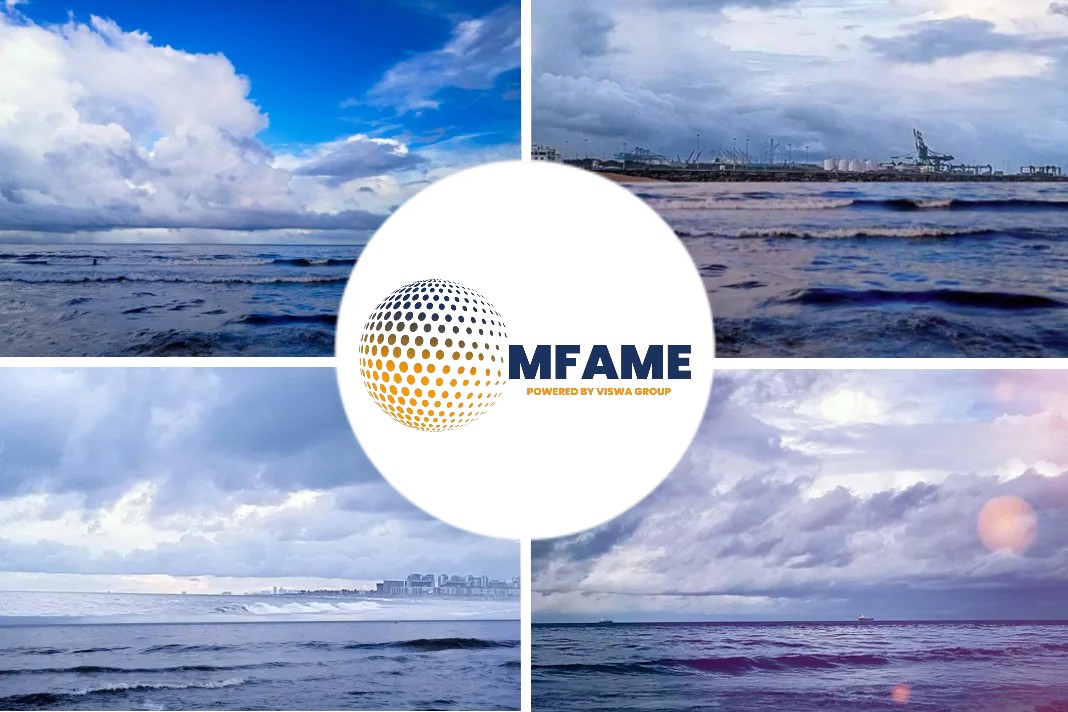The Marine Accident Investigation Branch (MAIB) has published a report of the investigation into the collision between cargo ship Saga Sky and Stema Barge II.
Summary:
On 20 November 2016 at about 08:50, the general cargo ship Saga Sky collided with the rock carrying barge Stema Barge II approximately 2 miles off the south coast of the UK. Both vessels had been affected by adverse weather conditions created by Storm Angus. As a result of the accident, 2 subsea power cables were severed.
Stema Barge II was being used to supply rock armour to a sea defence project commissioned by Network Rail. The barge had been anchored close to the subsea cable runs of Interconnector France-Angleterre 1, a high voltage power supply system operating between the UK and France.
After Saga Sky had passed through Dover Strait in the south-west traffic lane, the weather deteriorated significantly with the approach of Storm Angus. The south-westerly wind and tidal stream significantly reduced the ship’s progress. The master attempted to turn the ship to starboard to steer a reciprocal course and run with the weather until the storm abated. The effect of the wind acting on the ship’s cranes and aft superstructure overcame the turning moment of the rudder and prevented the turn from being completed. Despite maintaining propulsion, Saga Sky was blown broadside over a distance of approximately 7.4nm while the master continued with his attempts to turn the vessel to starboard until it collided with Stema Barge II.
The combination of wind and tide propelled Saga Sky, beam on to the wind, at speeds of up to 9kts, and even after deploying both anchors the ship continued to move under the effects of the storm.
Both vessels dragged their anchors and two of the four subsea cable pairs that made up the interconnector were severed.
Findings:
The investigation examined the reason for Saga Sky continuing to proceed in adverse forecast weather conditions, and the rationale for the master’s attempted turning manoeuvre. It found deficiencies with the ship’s weather forecast reception facilities, deficiencies in the sea defence project planning process, and potential shortfalls in the provision of emergency response assets.
Safety lessons:
- despite several prompts from the UK Coastguard, Saga Sky’s anchors were not deployed until the point at which a collision may have been prevented had passed
- an out of date Admiralty chart had been used to determine the anchor position for Stema Barge II, this position was directly above one of the subsea cables of Interconnector France-Angleterre 1. That this passed through the complete planning process for the sea defence work questions the level of focus on navigational safety
- given the volume of traffic using the Dover Strait and the absence of local commercial salvage assets, a review of emergency towage provision would be appropriate
Recommendations:
The Maritime and Coastguard Agency have been recommended (2018/104) to commission a study to review the full range of emergency response assets available in the Dover Strait area, including a reassessment of the need for a dedicated emergency towing capability.
Furthermore, in conjunction with the United Kingdom Hydrographic Office, the Maritime and Coastguard Agency have been recommended (2018/107) to justify the need for regulatory powers which could be applied, where appropriate to ensure vessels comply with the International Hydrographic Organization recommendations with respect to anchoring in the vicinity of submarine cables.
The Marine Management Organisation have been recommended (2018/105) to improve their marine licence application process by:
- highlighting precisely what activities the particular marine licence is to cover, including any specified risks to be assessed in the submission.
- clearly stipulating a requirement that the latest nautical publications are referred to in the submission.
- ensuring that its primary advisors are clear on the objectives of their respective reviews and the elements of the application they are required to assess.
The United Kingdom Hydrographic Office have been recommended (2018/106) to adopt the International Hydrographic Organization’s recommendation for responsible authorities to set a minimum distance, nominally 0.25nm, from submarine cable, within which ships should avoid anchoring or conducting other underwater activities.
Anglo-Eastern Ship Management Ltd have been recommended (2018/108) to enhance their shipboard procedures by developing vessel-specific guidance that its masters can refer to in order to estimate the effect forecast heavy weather conditions could have on their ships’ manoeuvrability.
Did you subscribe for our daily newsletter?
It’s Free! Click here to Subscribe!
Source: MAIB

























